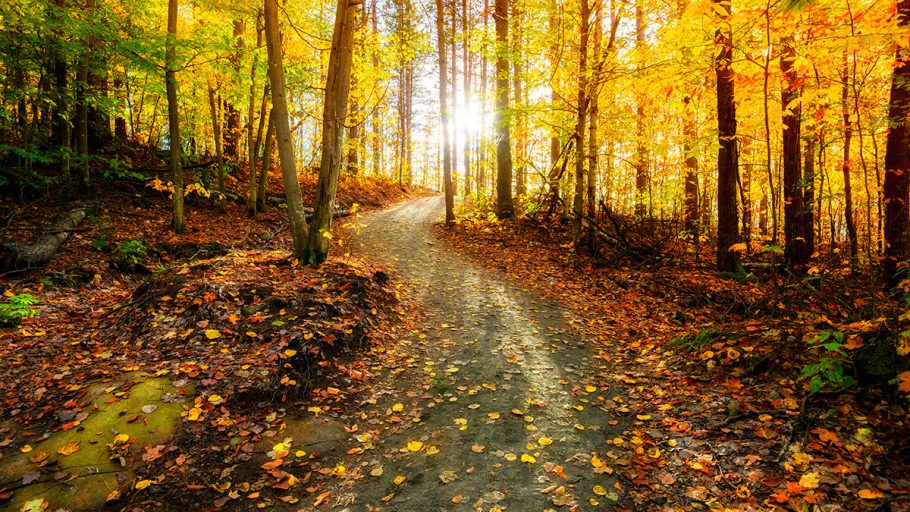With fewer bugs, quieter environments, and arguably better scenery, hiking in the fall is a great way to get some restorative fresh air and improve your health at the same time. Here are our top tips to make sure your time in nature is healing and not harmful.
1 Research Peak Foliage
If your main goal is to witness a fiery red, yellow, and orange landscape, know peak foliage times for your hiking course. Foliage season can vary based on location, altitude, weather, and type of trees, so check out a fall color guide to plan your timing.
2 Check Trail Conditions
Particularly in the fall, when weather, ground cover, and the amount of shelter available from trees can shift quickly, you want a clear idea of what to expect from your trail before you set out since it can affect everything from your start time to what you pack.
3 Know What Weather Suits Your Trail Best
Many people assume good weather means the best views, but a moody, foggy morning or a drizzly afternoon may be the perfect backdrop for highlighting vibrant fall colors. Any ridge or incline-based hikes should be hiked on clear days, though, or clouds may impact visibility.
4 Layer Up
Fall means unpredictable changes in temperature and precipitation, and just because it’s cooler doesn’t mean you won’t work up a sweat. Try a moisture-wicking first layer under an insulation layer and either a lightweight, waterproof top or a heavier, fleece-based layer. Wearing wool socks and having a hat / gloves also helps respond to different temperature needs at different hiking stages.
5 Wear Trekking Shoes Or Boots
Even if the weather is dry, trails in the autumn can be especially slippery with fallen leaves and moisture that may be trapped beneath them. Opting for shoes with sturdier grip is a safer and more protective bet at this time of year, whether or not your course involves scrambling or elevation changes.
6 Don’t Lose The Sunblock
The sun may not feel as strong compared to sweltering summer, but its UV rays can still be strong enough to damage to your skin, even on cloudy days. Sun-protective clothing (like a hat and sunglasses) may be needed, too, especially if you’re above the tree line or hiking in the open.
7 Stay Hydrated
Although you may not feel thirst as much as you do when you’re working up a sweat in hotter weather, a hike at any time of year is still a workout, so you’ll still be depleting your hydration levels. Especially if you’re hiking in drier air at higher elevations, keep drinking water regularly.
8 Be Visible To Hunters
In the US, fall overlaps hunting season. Even if you’re in a place where there are precautions to keep the two groups separate, you should wear bright, not earth-toned clothing. Making noise (like by attaching a bell to your backpack) could be helpful, too.
9 Prepare For Shorter Days
The sun sets earlier in the fall, so if you’re planning a longer hike, start your trek at first light, and bring a headlamp just in case you’re still moving after dark. Be aware of park closing times, too, as many close at dusk.
10 Let Someone Know Where You’re Going
As with any hike, no matter where or how far you’re going, it’s always a good idea to tell someone about your planned route and timings so they can alert people and tell them where to look in the event that something unexpected occurs.



